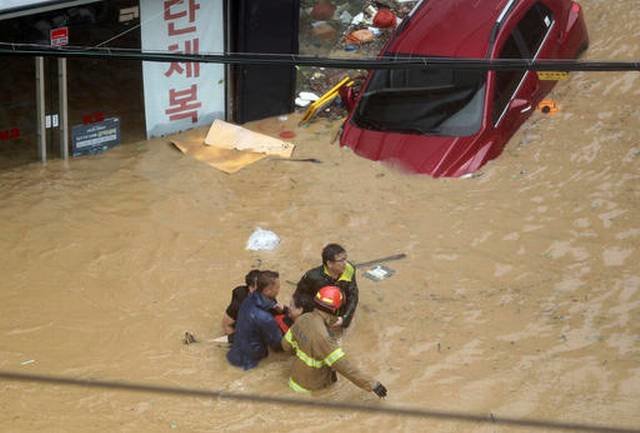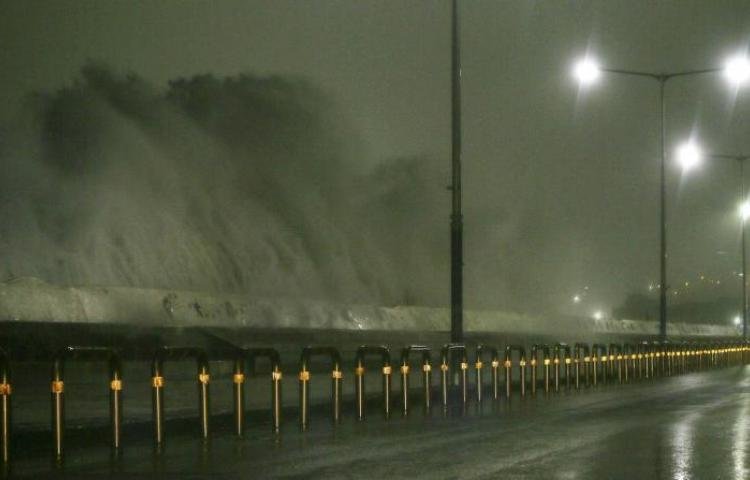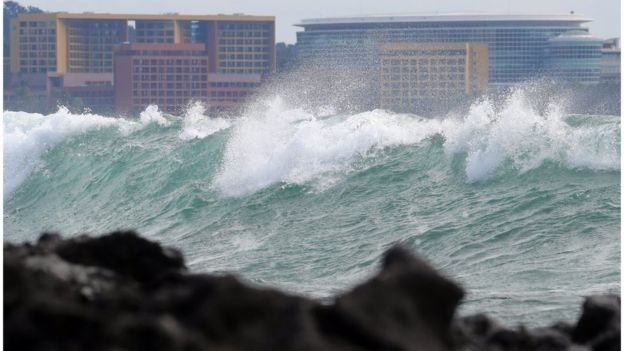South Korea's Ministry of Public Safety and Security said that seven people have been killed and four are missing.
The southern cities of Ulsan, Busan and South Gyeongsang province (Yeongnam region), as well as South Jeolla (Honam region), Jeju (Jeju Region) were the worst affected.
Three people died in the city of Busan, three the Ulsan and one victim in Gyeongju. One of the victims is thought to be an emergency worker who was helping with rescue efforts in Ulsan. Most of the victims are believed to have died as a result of flooding.

Footage shows vehicles swept away by muddy water racing through city streets. At one point a building was swept away by a swollen river.
Japan
Tropical Cyclone Chaba continued moving north-east over the Sea of Japan weakening and dissipating slightly. Red level storm warnings have been issued by Japan Meteorological Agency (JMA) for storms in Hokkaido island, the northernmost of Japan's main islands.
Rainfall
Rainfall totals according to WMO for a 24 hour period between 04 to 05 October, 2016
South Korea
Jeju - 174 mm
Seogwipo - 286 mm
Seongsan - 141.1 mm
Mokpo - 53.6 mm
Yeosu - 102 mm
Gwangju - 71 mm
Jindo radar - 55.1 mm
Wando - 90.2 mm
Ulsan - 205 mm
Masan - 84 mm
Daegu - 50 mm
Tongyeong - 124 mm
Jinju - 84 mm
Busan - 95 mm
Ulleungdo - 97 mm
Pohang - 114 mm
Japan
Oita - 64 mm





Comment: See also: Typhoon Chaba sets new records in South Korea